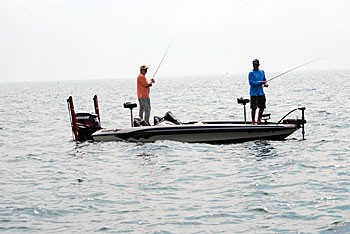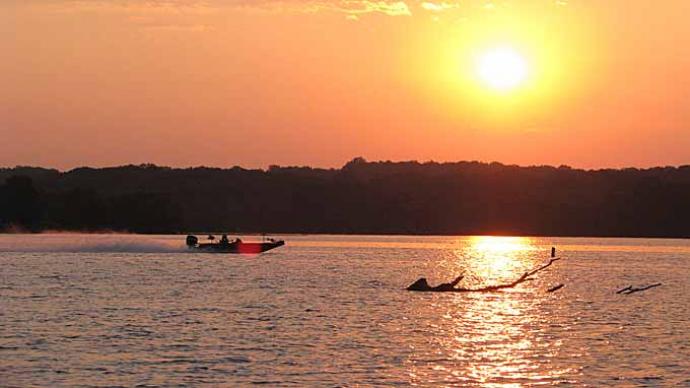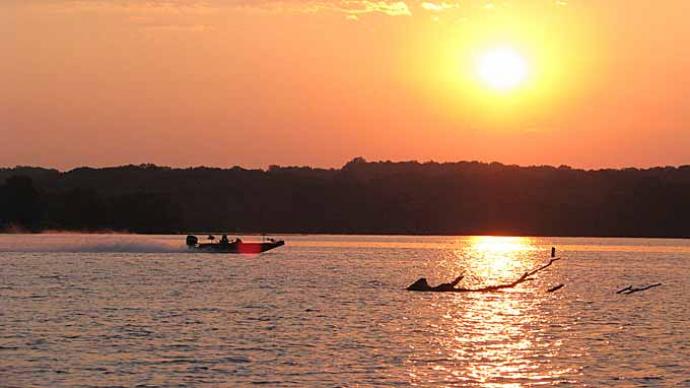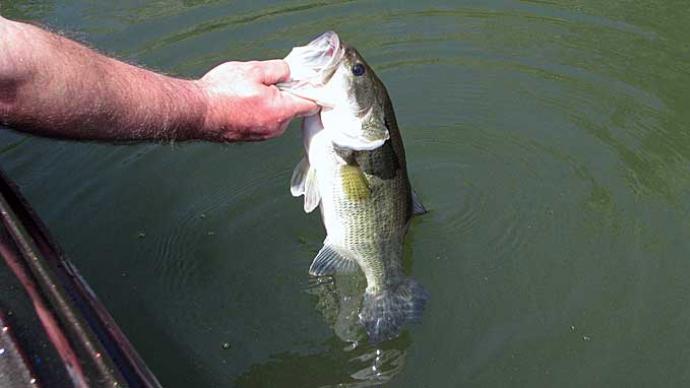
Anglers know very well what the phrase “dog days” means and how it pertains to fishing. It’s that time from late July through August when the fishing typically takes a predictable downturn. It coincides with the hottest weather of the summer.
The origins of this term date back to ancient times. The moniker Dog Star was given to the star Sirius, the brightest start in the constellation, Canis Major (Greater Dog), and the brightest star in the Earth’s night sky. The name Sirius is derived from the Ancient Greek word Seirios meaning “glowing” or “scorcher.” In the earliest times, the heliacal rising of the Dog Star marked the flooding of the Nile in Egypt and the “dog days” of summer for ancient Greeks.
Anglers bemoan the dog days of summer because their success rates plummet, but the reason isn’t the weather or the influence of some constellation. It’s because they continue to fish the same way in the same places while the fish have vacated their spring haunts in favor of more comfortable conditions and easy pickings. Anglers must wake up, change locations and use different tactics to catch more fish.

Smallmouth bass are more sensitive to temperature than largemouth bass. Largemouth don’t mind warm, tepid water as long as there is shade. Smallmouth are cool water fish, like walleye, and will vacate the shallows in search of cooler water. Fortunately for the bass, this movement coincides with a peak in prey. It’s fat city for fat smallmouth bass, so they can afford to be picky, and when they’re picky, they are tougher to catch.
When smallies find that ideal water temperature, their metabolism goes into high gear, and they eat more volume-wise than during any other time of the year. The problem for anglers is that it doesn’t take them very long. Feeding is often in short 30-minute bursts of activity and then two hours of rest and digestion before another abbreviated eruption in activity. Be there when the flurry is going on, and you’re golden! Miss the gorge, and you’ll be pickin’ for a while.
Summer smallies are not afraid to go deep. Many bass anglers consider 20 or 25 feet deep but don’t be afraid to discover trophy smallies 50 or 60 feet down during summer. The key to success this time of the year is to have an open mind and take the time to look.
The reaction by smallmouths to head deep in late summer is triggered mainly by temperature and forage, but in the back of their minds, bass begin moving deeper in anticipation of winter. Even though it’s months away, smallies begin to slide toward deeper water, where they’ll spend the winter. They’re not in isolated pods of inactive fish like in winter. Even in deep water, smallmouths are likely to occupy the entire water column rising to terrorize baitfish and dropping down to root out crawdads.

Smallmouths are not automatically tied to structure in the summer. In some climes, they will suspend under schools of shad, alewives, or other pelagic baitfish and bide their time. Finding the baitfish schools is not difficult. Look for birds. Gulls, terns, and cormorants will tell you where the baitfish are. The baitfish will be deep enough so the birds can’t spot and harass them. They are constantly on the move, and the predators will move along with them. The bass will station below the baitfish schools deep enough to find a comfortable temperature but close enough to capture the maximum amount of food while expelling the least energy when the urge strikes them. The patient smallies rise up when they get hungry, attack and terrorize the baitfish school and go back to lounging.
Catching these bass requires stealth. The baitfish schools are very spooky. Spook the school, and you’ll have to wait for them to resurface. Move slowly with the trolling motor or use the wind to drift into position. Make long casts with deep-diving cranks until you hit on a pattern. If the crankbaits don’t work, try ripping spoons under the baitfish school.
Dog days are more challenging than the spring or fall because bass are more widely scattered. Smallmouths are not in the pre-spawn, post-spawn, convalescing, or harassing spawning panfish mode in August. The spawn is long over, even in the Great Lakes, and more of the environment is suitable habitat from a temperature standpoint. More locations have the potential of holding bass, which causes them to scatter. You’re not likely to find dozens of bass on a particular piece of structure. It’s going to be more hunt and peck situations.
“The motivation is food,” tournament pro Joe Balog said. “The challenge is to locate the most prolific type of food and identify the factors that will concentrate bass there. It might be deep areas with a current, structure that borders deep water, reefs, shipwrecks, weedy humps, or the edge of a shipping channel or main basin.”

“Don’t discount the effects wind can have,” added Balog. “Bass are going to position where the wind has the most influence. Wind moves the water; the microorganisms that baitfish feed on the move with the water, and smallmouths follow the baitfish. If they can find a spot where the current is funneling baitfish constantly past them, they’ll take advantage of it. A strong wind from one direction for a few days will set up a current, and smallies will position behind the structure, just like they would in the river, and take advantage of the baitfish funneling by. When the wind stops, the current will reverse and move back the other way. It’s rare in the open basin of large lakes for there not to be some current.” Moving water also has more oxygen in it.
Balog likes deep-diving crankbaits, like Rapala’s DT-16 and Norman’s DD-22, for prospecting deep-water humps. “It’s not normally a numbers game,” he said, “but if I’m hunting for big fish, it’s a great place to target.”
Another proven technique for targeting deep humps is drop-shotting with finesse worms. Balog said he uses a ½-ounce drop-shot rig to probe isolated structures in addition to the crankbaits. The idea isn’t to sit on a spot for extended periods jiggling and shaking the bait. Lift the weight, drift a few feet, and drop it back down. Smallies suck the worm in as it settles.
The same structure can be probed with a swimbait on a jig head. Let the rig fall to the bottom, pop it a couple of times and then let it swim ahead before popping it again. You can substitute a crawdad for the swimbait, too.
Dog day smallmouths are no pushovers. If they suddenly disappear from your favorite springtime haunts, think fall, deeper, and structure.




